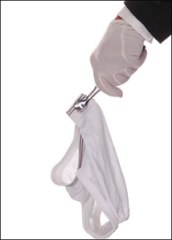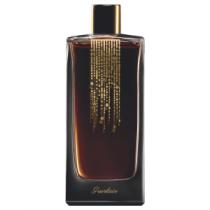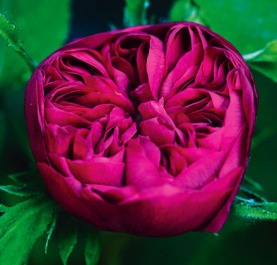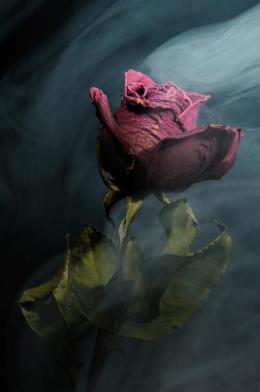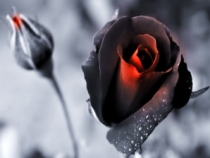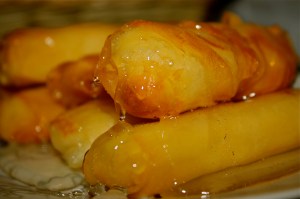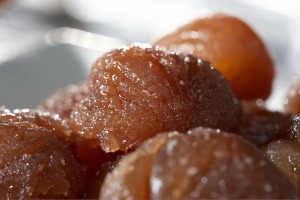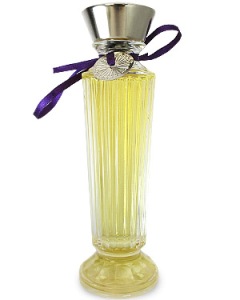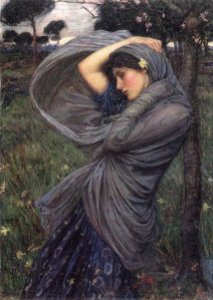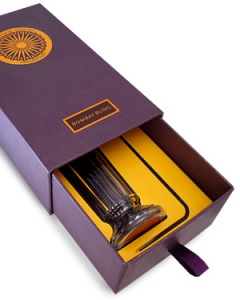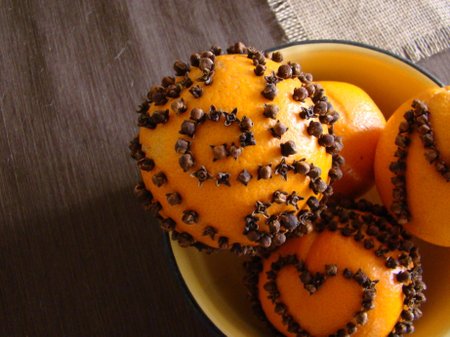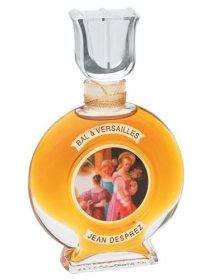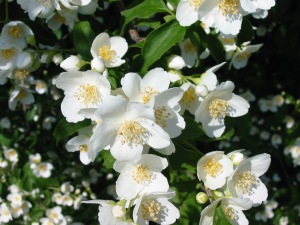A “ravished ballerina” is perhaps the best known description for Rubj (pronounced as “Ruby”) Eau de Parfum from Vero Profumo, a cult favorite that is hugely adored amongst perfumistas. That evocative summation from Now Smell This was only the first of many admiring reviews which have since followed. So, I fully expect to be tarred and feathered when I say that I absolutely hated Rubj. It is quite a shock to me because orange blossom fragrances are amongst my favorites, I don’t have huge issues with cumin, and I simply adored Onda by the same, very talented, extremely original perfumer. Alas, on my skin, Rubj was primarily and mainly the scent of sweaty feet, combined with rancid body odor.
Vero Profumo (sometimes written with odd punctuation as “.vero.profumo.“) is a Swiss niche perfume line that was established in 2007 with three pure parfums called Onda, Kiki, and Rubj. Vero Kern, the founder and nose behind Vero Profumo, explains on her website that eroticism and originality were the goals behind each one. In 2010, the fragrances were released in eau de parfum concentration. They were not simply a milder form of the originals but, rather, slightly altered versions. Fragrantica provides Ms. Kern’s explanation of the key differences:
The new perfumes are not the diluted version of the extracts. […] In order to render the scents lighter and easier to wear, the compositions have been simplified; yet that “je ne sais quoi” unmistakably characterizing the extracts is still clearly there. “I replaced the animalic notes with the unique scent of the passionfruit – says Vero Kern – I personally love it very much and think that it lends a sensual and erotic lightness to the composition”.
 Luckyscent provides the following notes for Rubj Eau de Parfum which is categorized on Fragrantica as a “floral oriental”:
Luckyscent provides the following notes for Rubj Eau de Parfum which is categorized on Fragrantica as a “floral oriental”:
Bergamot, mandarin, neroli, passion fruit, cumin, orange flower absolute, tuberose, basil, cedar, oak moss, musk.
I tried Rubj twice — three times if you’re including the fact that I gave it one more attempt this morning as I sat down to write this review. The first time, I applied the equivalent of two small sprays, only via dab method. The second time, I increased the quantity to about 3.5 good sprays. With the greater quantity, I could detect far more nuances, but the first time, my experience was almost entirely sweaty feet, followed later by rancid, sour, stale, musky body odor with just occasional hints of orange blossom lurking in the background. From start to finish, that was about it. So, this review will recount my experiences the second time around.
 Rubj opened on my skin with a breathtakingly ethereal bouquet of orange: orange blossoms; delicate, but tart and tangy, baby mandarins; juicy orange meat; slightly dry neroli; and a soupçon of tuberose. It sits atop a base of light cedar, infused with basil and salty, fresh, brightly green oakmoss. It was absolutely beautiful. And it lasted all of about 15 seconds….
Rubj opened on my skin with a breathtakingly ethereal bouquet of orange: orange blossoms; delicate, but tart and tangy, baby mandarins; juicy orange meat; slightly dry neroli; and a soupçon of tuberose. It sits atop a base of light cedar, infused with basil and salty, fresh, brightly green oakmoss. It was absolutely beautiful. And it lasted all of about 15 seconds….
Almost immediately thereafter, cumin and passion fruit explode upon the scene. My God, is it brutal! Filled with animalic notes and a very skanky musk, the cumin collides with the wet, earthy, gooey, over-ripe, indolic passion fruit to create one very unmistakable scent: sweaty feet. I cannot get over it and, as the smell grows stronger and stronger, an instinctive shudder wracks my body. Soon, something else gets added to the mix: body odor. It is sour, stale, and absolutely rancid in its muskiness. In gyms all across the world, men have bags filled with items reeking of this scent. Granted, the gym bags don’t usually also have a whiff of salty orange blossoms lurking underneath, but it’s close enough.
For the next two hours, the essential core of Rubj doesn’t change significantly on my skin. At times, the basil is a bit more noticeable; at others, the saltiness of the oakmoss is more predominant. Yet, at all times, the dominant elements are that brutal cumin combined with the skankiness of the passion fruit. By the start of the third hour, however, tuberose rises to the surface, and Rubj turns into a combination of tuberose and animalic, cumin-infused body odor with a hint of tart, juicy oranges behind it. The overall effect is simultaneous sour, fetid, and over-ripe. There were more than a few moments where my skin was radiating out the scent of unwashed, dirty, caked panties. I don’t even dare post a photo symbolizing what Rubj calls to mind! I’m not a prude but, frankly, I cannot imagine a circumstance where I would want to go out in public smelling like this.
Vero Kern says on the very first page of Vero Profumo’s website: “I love everything that reminds of the smell of skin.” And her replication of that scent was glorious in Onda EDP which I adored passionately, in part, because of how it evokes the smell of skin. There, it felt fresh and sweet, and, as I wrote in my review, conjured up the slightly heated aroma of skin when you’re intertwined with your lover in the early moments of intimacy. With Rubj, however, the scent as it manifested itself on my skin was closer to that of unwashed genitalia. The smell of skin, way, way, way after love-making is over, if you will.
At the start of the sixth hour, and until the final traces of the fragrance are gone from skin, Rubj returns back to animalic, dirty, raunchy musk with a light touch of florals. There is tuberose but, primarily now, orange blossoms. Neither has the faintest chance against the smell of body odor and sweaty feet. All in all, Rubj EDP lasted 8.5 hours on my perfume-consuming skin at the greater dosage and 7 hours with the lesser one. The sillage was never enormous or powerful at any time — a fact for which I am most grateful. Rubj always was soft in terms of projection, and became close to the skin approximately 3.5 hours into its development at the higher dosage and 2 hours at the lower one. As a whole, it is a surprisingly airy, light perfume in texture and feel.
As I noted at the start of the review, Rubj EDP is a hugely adored cult favorite. The review from Angela at Now Smell This that began the “ravished ballerina” associations calls it “innocent and carnal,” as well as “very, very sexy.” Two gushing reviews at Luckyscent go further:
- Goodness, someone’s been a naughty girl. This is the most frankly sexual scent I have ever smelled. It has a heavy narcotic quality that is sleepy and langorous. Heavy, intense orange blossom over a musk that is like nothing I’ve every smelled before (in a perfume). This is glamorous, old school, femme fatale. I realize I’m babbling, but it has scrambled my brains. Do try, do try, do try this beauty.
- I love the extrait to death but find it a bit overwhelming at times. I love its mouthwatering tartness, indolic jasmine and civet base; but that can get a bit too much. The EDP on the other hand is, I find, to be quite different. Opens with a surprising grapefruit-like citrus as opposed to the tartness of berries that conjure up images of scarlet rubies. The EDP is more of a suave, maroon linen cloth. It is much airier and greener, giving it an entirely different beauty that is much more approachable than the extrait. It is still somewhat suggestive due to the discrete use of cumin. Deceptively gorgeous.
If only I had experienced a discreet use of cumin! How I wish I could have experienced the lovely “spring bouquet” mentioned by one person on Fragrantica, or the orange blossom extravaganza adored by others. Instead, my experience is much closer to that of a number of Fragrantica commentators who had a less than enchanting experience. One commentator describes Rubj as: “Tuberose and cumin. Didn’t sit well with me – an overblown tuberose with a B.O undertone.” Another calls it “medicinal” tuberose, and a third writes about “a smelly armpit kinda smell. it’s kinda like cumin-body odor over a slightly floral scent.” But I relate to, and feel most strongly for, “catbiscuit” who wrote:
I fully expect to be punished for my review here but as long my penalty doesn’t involve being doused in Rubj EDP I think I will be okay.
I have worked really hard to like this perfume with multiple skin tests and a paper test in case my skin was distorting the fundamentals of the creation. I even turned on the air-conditioner in case the ambient heat was the problem.
To no avail, Rubj EDP still smells for all the world like the skin is oozing the waste product of last night’s champion indian curry banquet out through its pores in rivulets of warm sweat. Passionfruit-basil-tuberose I can pick them up but the whole is greater than the sum of its parts.
It isn’t until the musk enters in the drydown (on a skin test) that Rubj truly defies belief though. It has that peppery, fruity, musky male odour found emanating from a healthy scrotum after a sweaty day’s work. As a heterosexual woman this is enjoyable in small doses and infiniately superior to the curried sweat accord but still mind-boggling to say the least.
Good God, is that accurate! Well, she and I can be pilloried together — so long as the punishment is never more Rubj.



